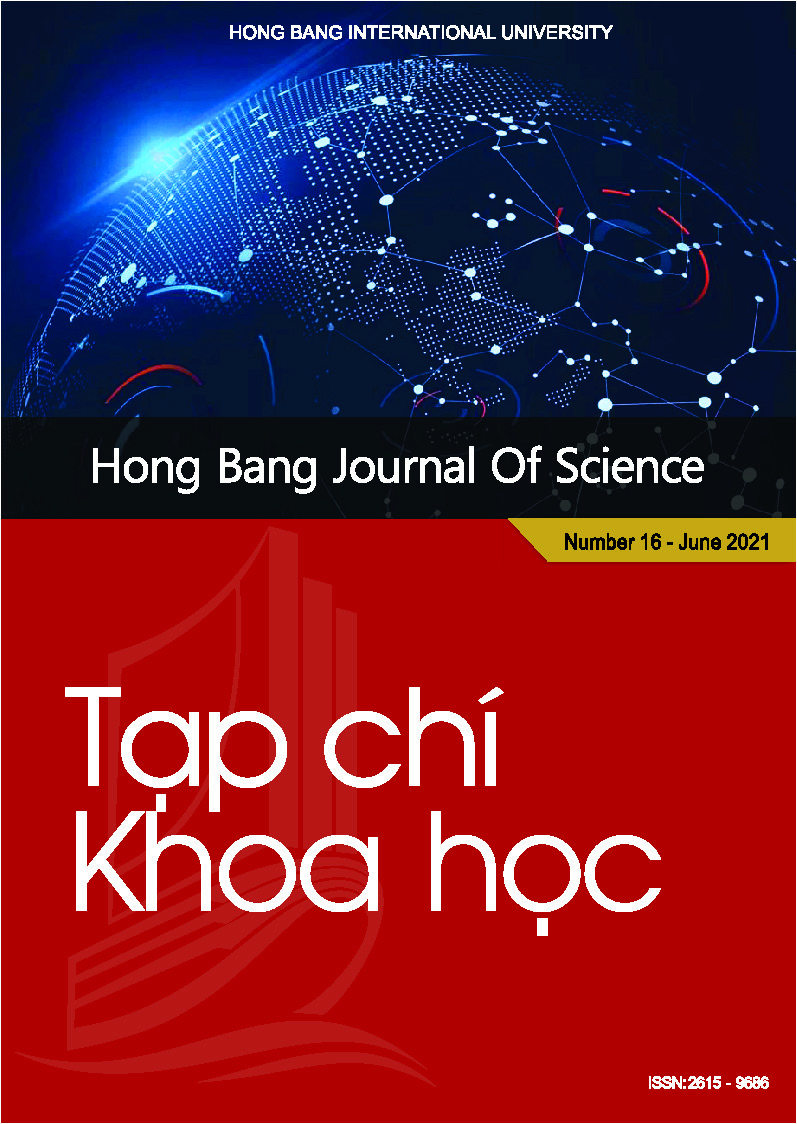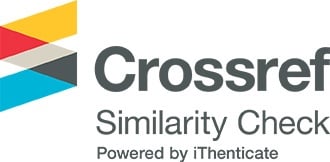Thiết lập quy trình PCR nhận diện chỉ thị phân tử liên kết với gen kháng bệnh khảm lá khoai mì (Manihot esculenta Crantz)
Các tác giả
Từ khóa:
bệnh khảm lá, chỉ thị phân tử, khoai mì, gen kháng bệnh khảm láTóm tắt
Bệnh khảm lá khoai mì (Cassava mosaic disease - CMD) là một trong những dịch hại gây tổn thất nghiêm trọng đối với sản xuất khoai mì trên thế giới. Các giống khoai mì kháng bệnh hiện đang được chọn lọc dựa trên sự hiện diện của các chỉ thị phân tử liên kết với gen kháng. Bài báo này trình bày kết quả thiết lập quy trình nhận diện các chỉ thị phân tử liên kết với gen kháng CMD bằng phương pháp PCR. Trong đó, phản ứng PCR được thiết lập để nhận diện 6 chỉ thị bao gồm SSRY28, SSRY106, NS158, NS169, NS198 và RME-1. Nhiệt độ bắt cặp mồi của phản ứng PCR được tối ưu hóa cho từng chỉ thị trước khi áp dụng cho việc nhận diện trên các mẫu giống khoai mì thu thập. Kết quả cho thấy trong 25 mẫu giống khoai mì được kiểm tra, có 20 mẫu mang 6 chỉ thị và 5 mẫu mang 5 chỉ thị. Sự khác biệt giữa các mẫu khoai mì thu thập so với mẫu đối chứng (kháng bệnh) thể hiện ở chỉ thị RME-1. Điều này cho thấy RME-1 có thể có vai trò quan trọng đối với việc nhận dạng gen kháng CMD.
Abstract
Cassava mosaic disease (CMD) is one of the most devastating pests of cassava production in the world. The disease-resistant cassava varieties are currently being selected based on the presence of molecular markers associated with the resistance gene. This paper presents the results of establishing the process of identifying molecular markers associated with the anti-CMD gene by the PCR method. In which, PCR reaction is set up to identify six markers, including SSRY28, SSRY106, NS158, NS169, NS198 and RME-1. The annealing temperature (Ta) of the PCR reaction was optimized for each marker before applying for identification on collected samples of cassava. The results showed that there were 20 samples with six markers and five samples with five markers. The difference between the collected samples compared with the control (disease resistance) samples was shown in the RME-1 marker. This suggests that RME-1 may have an important role in the identification of the CMD resistance gene.
Tài liệu tham khảo
[1] J.S. Pita, V.N. Fondong, A.Sangare, G.W. Otim-Nape, S. Ogwal, C.M. Fauquet, “Recombination, pseudo recombination and synergism of geminiviruses are determinant keys to the epidemic of severe cassava mosaic disease in Uganda”, Journal of General Virology, No. 8, pp. 655 - 665, 2001.
[2] O.J. Alabi, P.L. Kumar and R.A. Naidu, “Cassava mosaic disease: A curse to food security in Sub-Saharan Africa”, APSnet Features, pp. 1 - 16, 2011.
[3] Cục Bảo vệ thực vật, “Báo cáo tình hình bệnh khảm lá sắn và công tác chỉ đạo phòng chống dịch”, Hội nghị Giải pháp phòng, chống bệnh khảm lá khoai mì. Bộ Nông nghiệp và Phát triển nông thôn, tr. 1 - 11, 2018.
[4] Fondong, “The search for resistance to Cassava mosaic geminiviruses: How much we have accomplished, and what lies ahead”, Frontiers in Plant Science, Vol 8, pp. 1 - 19, 2017.
[5] D. Deng, W.G. Otim-Nape, A. Sangare, S. Ogwal, R.N. Beachy and C.M. Fauquet. “Presence of a new virus closely related to East African cassava mosaic geminivirus, associated with cassava mosaic outbreak in Uganda”, African Journal of Root and Tuber Crops, Vol 2, pp. 23 - 28, 1997.
[6] X. Zhou, Y. Liu, L. Calvert, C. Munoz, G.W. Otim-Nape, D. J. Robinson, B.D, “Harrison. Evidence that DNA-A of a geminivirus associated with severe cassava mosaic disease in Uganda has arisen by interspecific recombination”, Journal of General Virology, Vol 78, pp. 2101 - 2111, 1997.
[7] Viện Bảo vệ thực vật, “Một số nghiên cứu về bệnh virus khảm lá sắn và giải pháp phòng trừ”. Hội nghị Giải pháp phòng, chống bệnh khảm lá khoai mì, Bộ Nông nghiệp và Phát triển nông thôn, tr. 35 - 61, 2018.
[8] A.O. Akano, A.G.O. Dixon, C. Mba, E. Barrera, M. Fegene, “Genetic mapping of dominant gene conferring resistance to cassava mosaic disease”, Theor Appl Genet, Vol 105, pp. 521 - 525, 2002.
[9] E. Okogbenin, M.C.M. Porto, C. Egesi, C. Mba, E. Espinosa, L.G. Santos, C. Ospina, J. Marín, E. Barrera, J. Gutiérrez, I. Ekanayake, C. Iglesias, M. Fregene. “Marker-assisted introgression of resistance to cassava mosaic disease into Latin American germplasm for the genetic improvement of cassava in Africa”, Crop Science, Vol 47, pp. 1895 - 1904, 2007.
[10] E. Okogbenin, C.N. Egesi, B. Olasanmi, O. Ogundapo, S. Kahya, P. Hurtado, J. Marin, O. Akinbo, C. Mba, H. Gomez, C. de Vicente, S. Baiyeri, M. Uguru, F. Ewa and M. Fregene, “Molecular marker analysis and validation of resistance to cassava mosaic disease in elite cassava genotypes in Nigeria”, Crop Science, Vol 52, pp. 2576 - 2586, 2012.
[11] Y. Lokko, E.Y. Danquah, S.K. Offei, A.G.O. Dixon, M.A. Gedil, “Molecular markers associated with a new source of resistance to the cassava mosaic disease”, African Journal of Biotechnology, Vol 4, pp. 873 - 881, 2005.
[12] I.Y. Rabbi, M.T. Hamblin, M. Gedil, P. Kulakow, M. Ferguson, A.S. Ikpan, D. Ly, J-L. Jannink, “Genetic mapping using genotyping-by-sequencing in theclonally-propagated cassava”, Crop Science, Vol 54, pp. 1384 - 1396, 2014a.
[13] I.Y., Rabbi, M.T., Hamblin, P.L. Kumar, M.A. Gedil, A.S. Ikpan, J. Jannink, P.A. Kulakow, “High-resolution mapping of resistance to cassava mosaic geminiviruses in cassava using genotyping-by-sequencing and its implications for breeding”, Virus Research, Vol 186, pp. 87 - 96, 2014b.
[14] A. Healey, A. Furtado, T. Cooper and R. J. Henry, “Protocol: a simple method for extracting next-generation sequencing quality genomic DNA from recalcitrant plant species”, Plant methods, Vol 10, No. 1, pp. 21-29, 2014.
[15] W. Rychlik, W.J. Spencer and R.E. Rhoads, “Optimization of the annealing temperature for DNA amplification in vitro”, Nucleic Acids Research, Vol 18, No. 21, pp. 6409 - 6412, 1990.
Tải xuống
Tải xuống: 37







